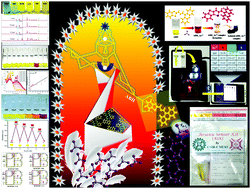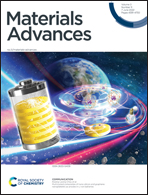Smartphone-based digitized recognition of As3+ along with its effectual mitigation in water using a benzothiazole-functionalized molecular scaffold†
Abstract
In this work, an innovative azomethine-functionalized chromogenic and electrochemical chemosensor ABH [2-((acridin-9-yl)methylene)-1-(benzo[d]thiazol-2-yl)hydrazine] was explored, which was synthesized via a one-pot synthetic route with the aim of prolific and sequential aqueous-phase detection of As3+ and F−. The chemosensor exhibited distinct colorimetric transformation from yellow to burgundy upon addition of As3+, which upon subsequent addition of F− rejuvenated, suggesting a strategic application for designing three-input logic gate imitative electronic circuits derived from Boolean algebra. Several sophisticated wet chemical experiments, for instance, UV-Vis spectroscopy, ESI-MS, cyclic voltammetry, 1H-NMR spectroscopy, and FTIR spectroscopy along with theoretical computations substantiated the sensing phenomena. Furthermore, the development of an inexpensive portable arsenic sensor kit (ASK) in addition to a RGB-based smartphone-coupled diagnostic sensor station for rapid on-field detection of As3+ made the chemosensor an exclusive one as a value-added product in our society. Furthermore, the complexation ability of the sensor with toxic As3+ introduced it as a smart material for the aqueous-phase elimination of As3+.



 Please wait while we load your content...
Please wait while we load your content...